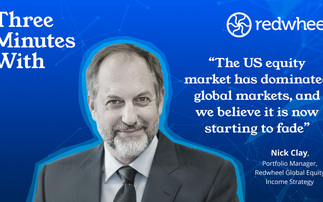PARTNER INSIGHT: Ian Lance and Nick Purves, managers of the TM RWC UK Equity Income Fund, analyse the tug of war between value and growth that is being observed in markets today and why the future for value investing looks bright.
For Ian Lance and Nick Purves, managers of the TM RWC UK Equity Income Fund, the tug of war between value and growth that is being observed in the market today is something they have both experienced several times before in their 25-year plus careers, and explored on a wider scale when delving further back into history.
In the 1960s a new age of disruption saw investors ditch value investing for high-growth stocks such as Xerox, Polaroid and Eastman Kodak - institutional darlings that were part of the ‘Nifty fifty' range. Similarly, in the 1990s, value fell behind as investors sought growth in TMT stocks including Dell, Microsoft, Cisco and Intel. Dubbed the ‘four horsemen', these stocks accounted for 55% of NASDAQ's 1999 gains.
This stock performance is eerily similar to core market disruptors such as FANGMAN - Facebook, Apple, Netflix, Google, Microsoft, Amazon and Nvidia - which in 2017 represented almost a quarter of the Russell 1000's overall gains.
Yet, in the past, many of these popular trades saw their valuations spurred higher by unwarranted speculation. Stories of their growth became so compelling that the notion of value became much less important. Investors ended up paying record multiples for growth stocks that failed to line up to their high expectations.
"One of the ‘hot' stocks of the dot com boom was Sun Microsystems which investors, just like today's growth stocks, were so desperate to own that they bid the stock up from $10 to over $60 in 1999. They then watched with horror as it crashed back down to $5 the following year," recalls Purves.
"At the peak, investors were valuing the stock on ten times revenues (similar to Facebook and Netflix today). Today, given their lofty valuations, it would appear the FANGMAN stocks are going to dominate the world and therefore any valuation can be justified. However, people thought the same about the Nifty Fifty stocks."
Having seen the rotation of growth and value stocks several times in their careers, Lance and Purves believe markets could be entering a similar point of change. This notion is supported by the dispersion of valuations across the cheapest and most expensive stocks in UK, which has become much wider in recent years and has resulted in the value universe of potential ideas expanding once again.
However, in line with the growth/value shift seen during other core periods in history, Lance notes the key to successful value investing is to be prepared for the turning point in markets ahead of when it occurs.
"Value investing has always felt pretty lonely, but surely that is the reason it works," says Purves. "And one of the key lessons we have learnt through our careers is that when the shift from growth to value happens, it can be sudden and violent. Positioning needs to be made in advance of that move. So the time to act, and focus on the value style of investing, is now."
Click here to read the full article analysing value shifts across history, as well as Nick Purves and Ian Lance's unique approach to ‘intrinsic' value investing in their new fund.













